A Single Thread, Part One: Textiles in the Near East
The history of textiles in the Near East is fascinating and full of rich stories. Traditional clothing and rugs represent deep cultural connections that span generations and across geographic lines. For many Armenians, textiles have always been an important part of heritage and identity.
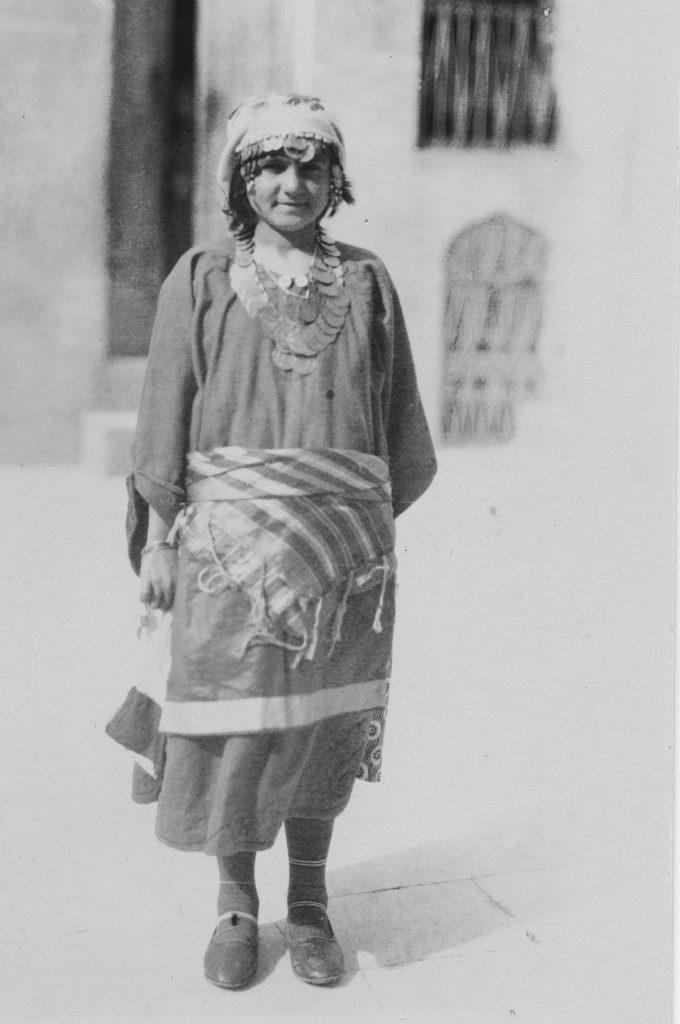
A young Armenian girl from Turkey wearing traditional clothing, date unknown
Although silk was initially imported from China for use in clothing, Armenians began to raise their own silkworms through sericulture in order to produce their own silk for making rugs and clothing. Characterized by rich reds and vibrant golds, traditional Armenian clothing represented the skill and craftsmanship of the people who wore it. Clothing typically was adorned with embroidery similar in style and intricacy to the patterns woven into the rugs and other textiles of the time.
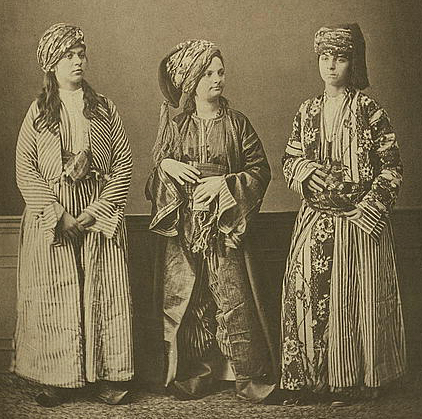
Although the occurrence of wearing traditional clothing in day to day life had decreased by the 20th century, the use of such items in a ceremonial context was still quite common. From weddings and christenings to holidays and religious ceremonies, Armenians living in the Ottoman Empire expressed their culture through the clothing they wore.
Photo Left: A young man, right, wearing traditional clothing, c. 1873
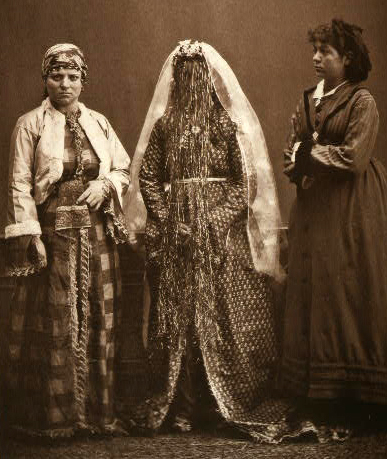
While it is impossible to know how many priceless and irreplaceable clothing items were lost during the Armenian Genocide, those escaping persecution carried with them the rich traditions and artistry that spanned centuries. Traditional clothing has remained an indelible part of Armenian identity that is still shared from generation to generation today.
Photo Right: An Armenian bride, center, wearing traditional wedding clothing Constantinople, c. 1873
Centuries of Tradition
Blessed with access to rare materials, the people living in the Near East developed a carpet industry unlike any other in the world. For many ethnic Armenians living in the Ottoman Empire, the booming industry fueled by trade with Europe and Asia was a vital part of their economy and provided them with a steady source of income. Although the art of carpet weaving is incorrectly understood today under the single moniker ‘Turkish Carpets’, Armenian carpets still bear distinct characteristics of their own that represent centuries of religious and cultural traditions.
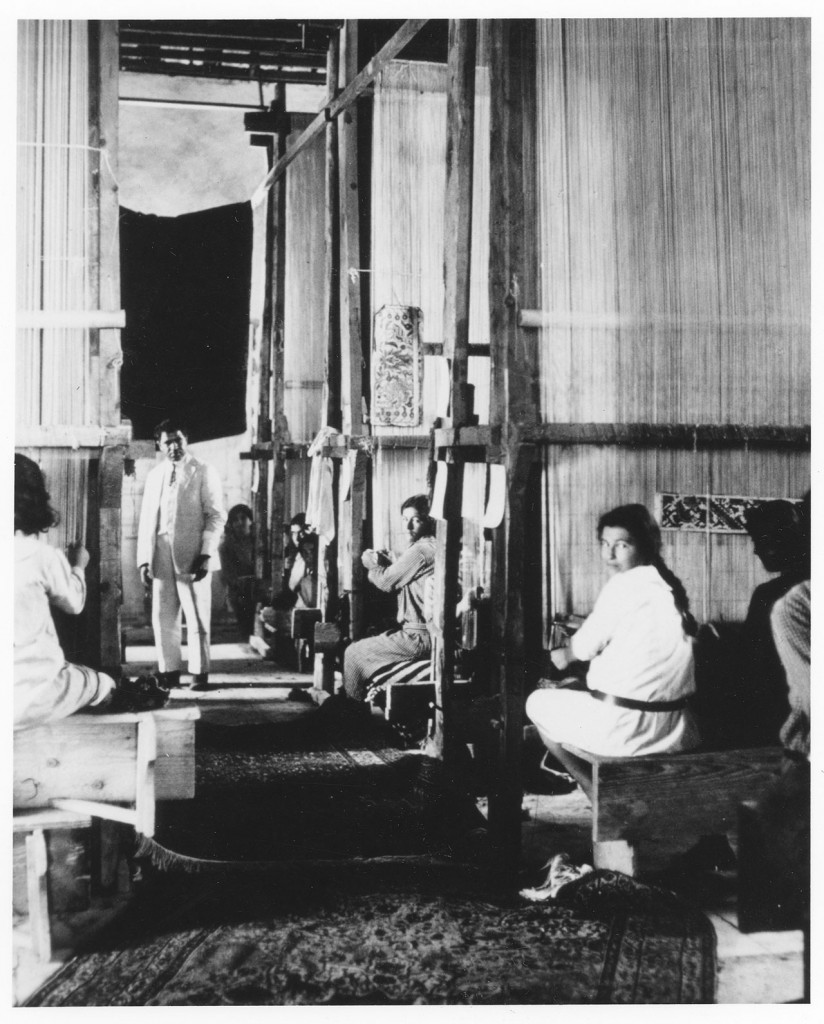
Women weaving on large looms, c. 1925

Initially developed out of necessity based on the climate conditions, rugs were first used as a way of keeping the home warm during the harsh winter. Due to the unfortunate tendency for textiles to break down over time, there is very little physical evidence of early Armenian fabrics and rugs. However, archeologist have unearthed several partial rugs that could be Armenian in origin based on their bright colors and distinctive weaving pattern. The Pazyryk rug, dating from the possibly the 3rd to 5th century BCE and currently the oldest known rug in the world, is thought to be of Armenian origin, although this assertion is highly contested.
Photo Left: Pazyryk Carpet, thought to be of Armenian Origin, c. 3rd to 5th BCE. Currently housed at St. Petersburg’s Hermitage Musuem.
Following the adoption of Christianity as the majority religion in 301 CE, the iconography of Armenian rugs became distinctly religious. Developing alongside architecture and manuscript art, textiles from this era became part of a larger group of art that was undeniably and distinctly Armenian. The cross, which was incorporated during the Middle Ages, would come to be the dominate carpet motif. Other biblical and Christ motifs, such as the Garden of Eden, were interwoven without other classic imagery like flowers, geometric shapes, and intricate decorative elements to give Armenian carpets a distinctive and memorable look.
The Devasation of World War I
The wreckage caused by the Armenian Genocide and World War I did not spare the textile industry. Armenians, who at the time represented a sizable proportion of skilled laborers, including weavers, were greatly impacted by the development towards a wartime economy that was unable to sustain itself for the long-term. Prior to World War I, the Ottoman Empire relied heavily on its textile industry as a source of income. The impact of the war, including the refugee crisis that impacted not only Armenians, but Anatolian Greeks, Assyrians, and Turkish people, left the Ottoman Empire without a major source of income to fuel its continuing war effort.
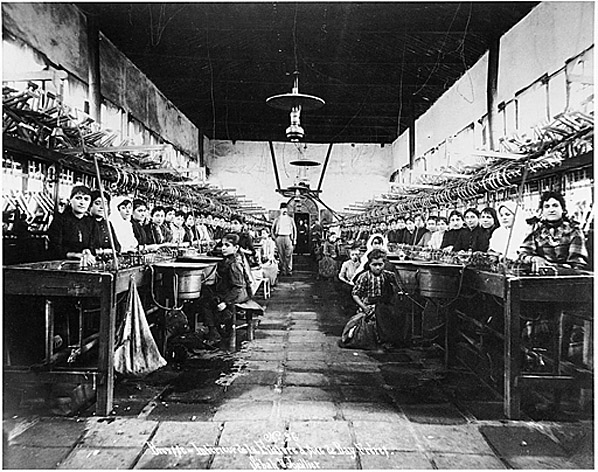
Women and children in an Ottoman textile factory, c. 1878, source: Roger Viollet/ Liason/ Getty Images
As nationalism grew, and the tide of the war turned, non-Turkish ethnic groups living in the Ottoman Empire were increasingly targeted. Due in part to its heavy reliance on Armenian skilled weavers, the systematic deportations, and later, mass executions of men, women, and children, caused the textile industry to suffer greatly. For Armenian workers, not only did they face the threat of losing their lives at the hands of their persecutors, but they had to contend with uncertainty that came with the loss of their homes and livelihoods.
As the dust settled from World War I and the most violent stages of the Armenian Genocide, thousands of Armenians were left homeless, jobless, and, for the most unfortunate, parentless. Those who made their living as weavers and textile workers had to contend with the harsh reality of finding work in a hostile country that was still reeling from the economic impacts of a war that brought about the end of the Ottoman Empire.
The textile traditions that had been carried from generation to generation were in danger of being lost if nothing was done to stop what would have been a truly catastrophic loss of Armenian culture, heritage, and art.
The story doesn’t end there!
Check back soon for the next installment of our series on Armenian Textiles.
